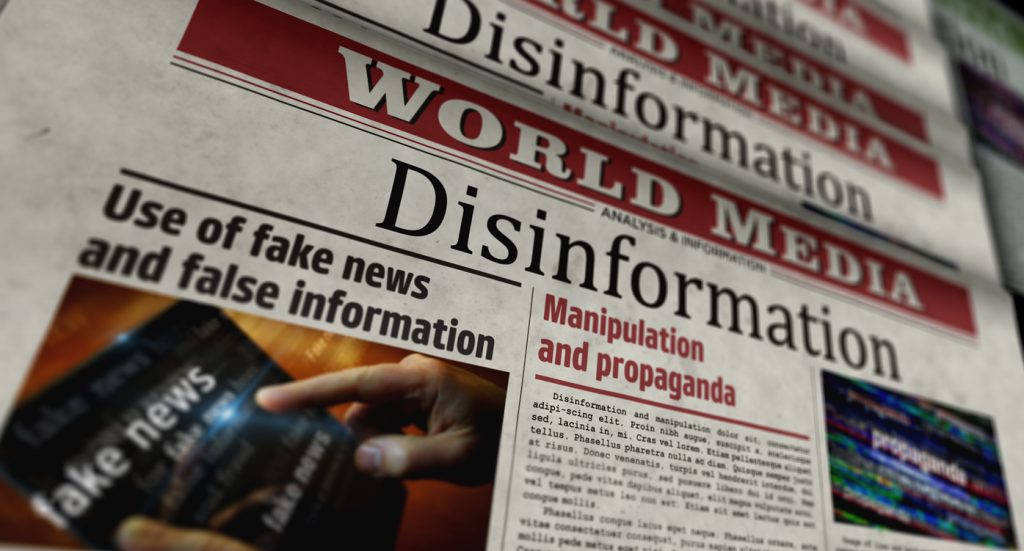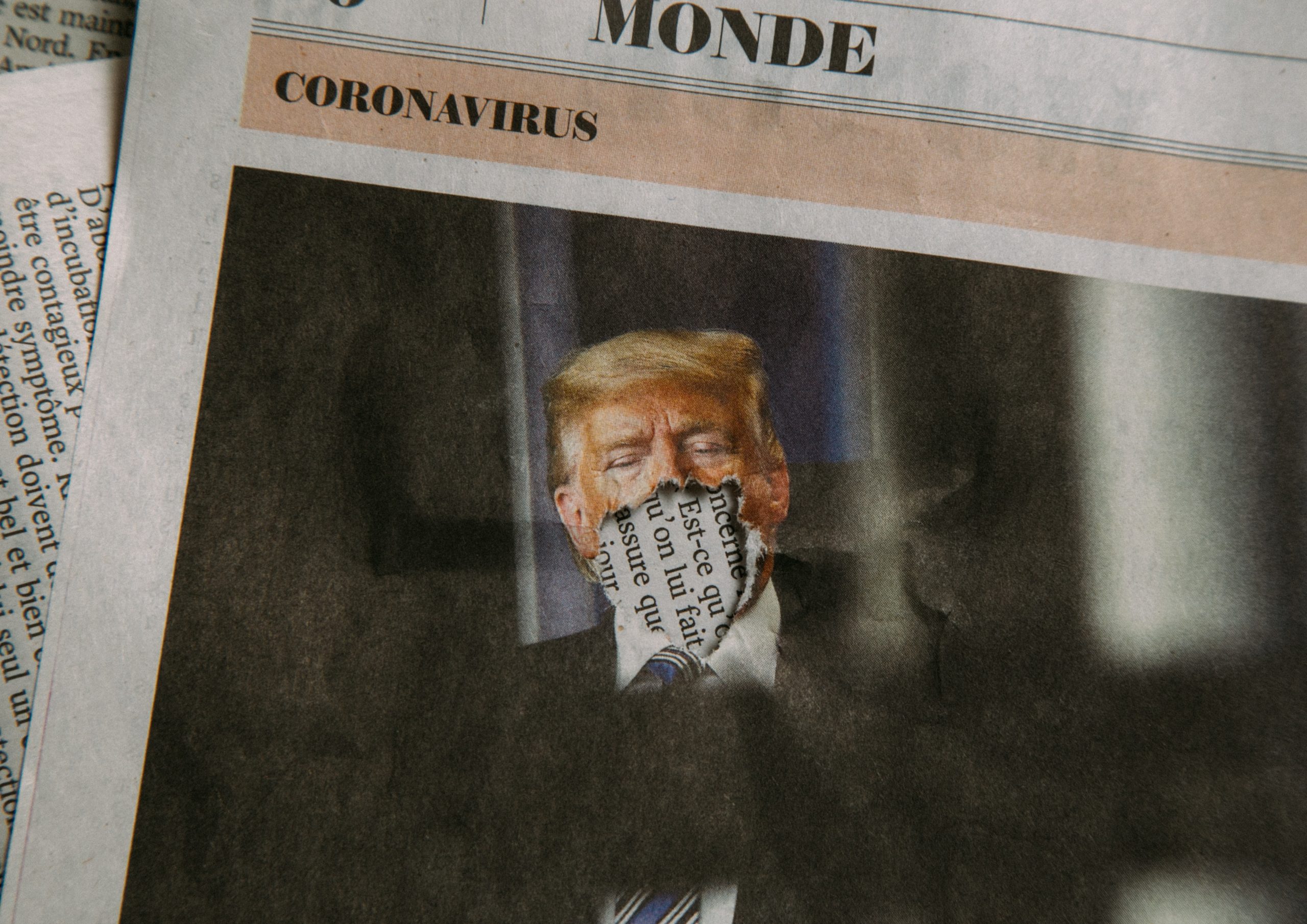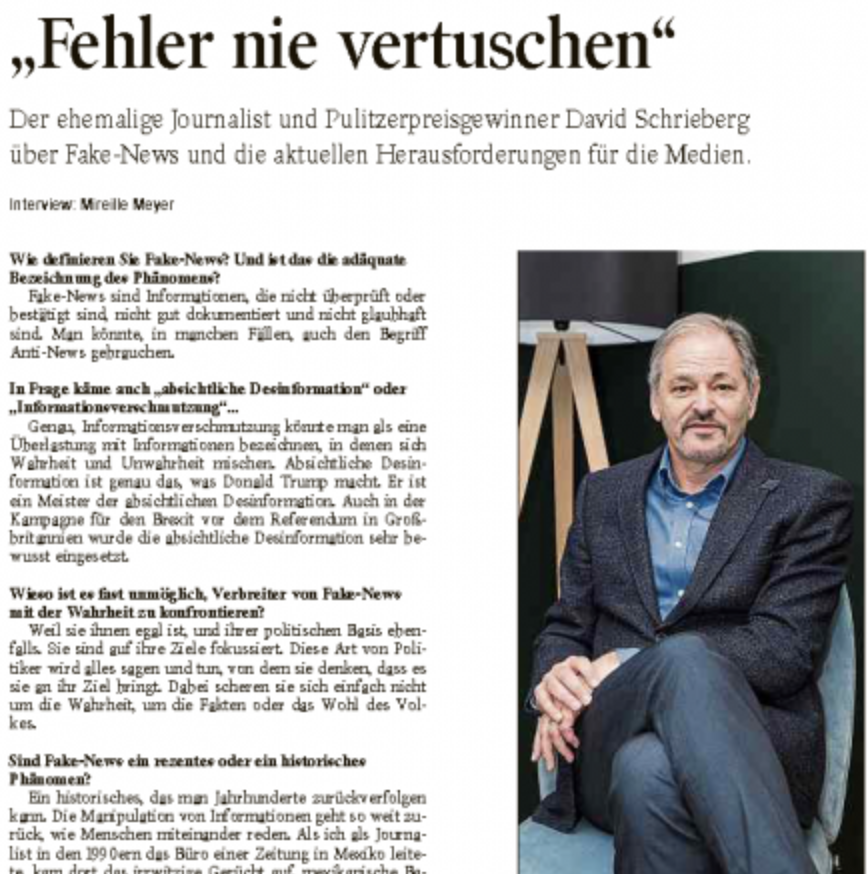
My wife and I were watching a nature show one recent evening.
From deep within the burrows of field mice to the nests of owls inside tall cacti and the underground lair of tiny ants, the camera followed the animals as if they had lenses in their heads. We repeatedly asked ourselves: “How did they shoot that? How were they there at that precise moment? How did they track bats at night that feed on flowers that open once in their lifetime?”
Suddenly, we agreed: This can’t be real. Must be AI. We stopped watching. If it’s a simulation, we said, not for us.
Regardless of whether or not it was AI, it’s impossible now to ignore the fact that our lives are increasingly filled with artificially-created information. Then there’s the tsunami of unverified, conspiracy-filled “fact”-based stories – I’m looking at you, social media – and outright invented stories propagated by seemingly-legitimate outlets generated by propaganda machines burrowed deep in Russia, China, Turkey, the Western Balkans and Hungary, among others.
How can we know these days what’s real and what isn’t?
What gives me the right?
Before we dig into that question, indulge me as I recount a bit about myself – my favourite subject. Bear with me. There’s a reason beyond egotism.
When I entered journalism, I figured I’d be safe forever professionally – and I was for about two decades. I started as a freelance reporter in Israel for various Time Inc. publications, moved to New York and worked for a wire service, graduated to newspapers in California and, finally, capped my print career as a newspaper and magazine foreign correspondent.
In 2000, I started transitioning out of the mainstream press to digital media, founding a consulting company in Silicon Valley helping companies understand audiences as they made the leap from print to computer screens (this was way pre-mobile).
Reporting in the Golden Age
During those print years, I had the great privilege to grow up professionally in the golden age of journalism, when we were often about holding the powerful accountable, and the wall between publishing (i.e. the business side) and the reporting/editorial side was made of brick.
At the great American newspapers of the time – even when there was pressure from publishers to soften reporting because of business interests, or government pressure, the editorial side generally pushed back and won, defended by the courts and the Constitutional protections for a free press.
When I worked at the San Jose Mercury News – then the most profitable newspaper in the United States (thanks to print and classified advertising) – the paper had hundreds of reporters and editors. It was understood that our value to advertisers was the audiences that we assured them through the credibility of our reporting, and our ability to tell engaging stories relevant to the lives of our readers.
Learning the trade
I learned journalism “by the seat of my pants and the leather on my shoes.”
I learned how to present the facts, always the facts, in ways that were engaging, interesting and even amusing.
We all knew that the value of our work to our readers was founded on the accuracy and truthfulness of our reporting.
Over the past 100 years or so, news organisations were the best sources of information, filtering out the low-quality, irrelevant, incorrect and unreliable facts. All that has changed during the past 30 years, as the Internet gave anyone with a digital device and connection a way to create content, and publish it to literally billions of people. This is an earthquake that was difficult to imagine at the dawn of the Internet age.
As the sun rose on that age, most major publications put everything online for free in the naive expectation that the print advertising model would translate to internet.
It didn’t.
As print journalism’s business model collapsed, too many journalists – the human filters who had provided so much value to the public – were laid off. Over time, much of my generation of newspaper journalists – as many as 80,000 in the US and 40,000 in Great Britain – have lost their jobs as the industry collapsed.
Poof, and the future changes
The industry I thought would be safe forever blew up…slowly, then fast.
Now, I’m no stranger to truth versus fiction – or to Fake News.
As a working newspaper and magazine reporter for more than 20 years, I was well accustomed to hearing lies, ferreting out the truth, separating fact from fiction.
We live in an age of alternative facts, an expression that would be hysterical if it were presented in a satirical context, driving public policy, international relations and global events.
Here’s an example from the single individual most responsible for turbocharging the phenomenon of “truthiness” – lies presented as truths, alternative facts – a term coined by American humourist Stephen Colbert: In early September 2025, President Trump spent part of an exchange with journalists at the White House assuring them that he was alive.
It sounds absurd— he was there in front of them, blustering and babbling — but this is an era of epic absurdity, and for the three previous days, the internet had been ablaze with assertions that the president was dead and that any images or Truth Social posts to the contrary were counterfeit.
As The Guardian noted: “It is a window into the danger of misinformation and the way in which that’s accelerated through the online memes and videos. It was quick and fairly effective in convincing thousands, maybe millions of people that Donald Trump was actually gone.”
Or, as New York Times columnist Frank Bruni put it: “People increasingly feel that they inhabit a hall of mirrors. They’re right.”
Hall of Mirrors. I like that expression for the times we live in.
I’m reminded of a line delivered by Chico Marx in the 1933 classic movie, Duck Soup. When a woman claims that, despite his denials, she saw him leave her bedroom a few minutes earlier, he says: “Well, who you gonna believe? Me, or your own eyes?”
This, to me, characterises our current era. One that, even if Donald Trump didn’t create it, he has elevated to become standard. People repeatedly believe Trump, no matter evidence to the contrary, no matter when it directly counters their own self-interest. Go figure.
Democracy and the walking dead
In the past nine months, we’ve entered the realm of “zombie democracy” as New Yorker Magazine journalist George Packer calls it. “The War Against Reality” is how Derek Thompson characterises these times, citing the Trump administration’s “mass cancellation of inconvenient data” – and including Trump firing the head of the Bureau of Labor Statistics after objecting to the bureau’s labour numbers; the administration dismissal of government climate experts and Robert F. Kennedy Jr.’s assault on the Centers for Disease Control, justifying his actions with often-discredited sources and misinformation.
“The White House is trying to program reality as if it were reality TV,” Thompson wrote. What Trump is pioneering is “choose-your-own-reality governance.”
Trump’s attempts to recast unflattering facts extends to the elevation of proven liars. If your lies flatter him, you’re safe. We all hear what he says day after day and shake our heads and roll our eyes. But what he’s doing where the press is concerned is truly alarming.
In April, the Department of Justice – which once prided itself on its independence from the presidency and is now firmly under its heel – reversed a protection long afforded journalists: from subpoena of their records and sources, allowing prosecutors to compel testimony about confidential sources, and seize reporter materials.
It fit this administration’s broader goal of reframing the press as adversary rather than pillar of democracy.
Across the globe, dictatorial leaders such as Duterte, Erdoğan, Orbán and Putin weaponised legal systems to silence the press and critical news sources. America now edges closer to that dangerous model.
Discredit the press, dismantle its protections and let dissent collapse in silence: it’s a familiar strategy to those who study the fall of free societies. In my reporting days, Thomas Jefferson’s quote could be recited at will by many of us: “Were it left to me to decide whether we should have a government without newspapers, or newspapers without a government, I should not hesitate a moment to prefer the latter”.
What next?
Where are we now? In a world with few information filters, flooding us with useless, irrelevant, unverified, and often fake information. This is how Hannah Arendt saw such a future:
“The moment we no longer have a free press, anything can happen. If everybody always lies to you, the consequence is not that you believe the lies, but rather that nobody believes anything any longer. This is because lies, by their very nature, have to be changed, and a lying government has constantly to rewrite its own history. On the receiving end you get not only one lie but you get a great number of lies, depending on how the political wind blows. And a people that no longer can believe anything cannot make up its mind. It is deprived not only of its capacity to act but also of its capacity to think and to judge. And with such a people you can then do what you please.”
AI and the (maybe worse) future
We haven’t even talked about AI yet, the new factor changing…everything.
Big thanks for a piece in the Bulletin of the Atomic Scientists by science journalist Susan D’Agostino for her overview of how “AI is polluting truth in journalism.”
Even if misinformation is not a new invention, “with AI as an amplifier, it now spreads faster, adapts smarter and arguably hits harder than before,” – and comes at a time when the traditional counterweight to falsehoods – legitimate journalism – faces economic decline, shrinking newsrooms and eroded public trust.
She cites a 2024 World Economic Forum Global Risks Report that finds that bad actors who leverage misinformation to widen societal and political divides have emerged as “the most severe global risk” in the years ahead.
NewsGuard, a firm that rates the reliability of online sources, has a sobering count: by May 2025, more than 1,200 AI-generated news and information sites with seemingly legitimate names — such as iBusiness Day and Ireland Top News — were publishing in 16 languages, churning out false claims and operating with little to no human oversight.
But fringe sites of dubious quality are not the only concern. Prominent news organisations — including the Washington Post, Politico, and The Guardian — have linked to stories written by chatbot-run outlets that have little regard for accuracy, according to the New York Times.
Suggested treatments for this problem include strengthening adherence to journalistic standards like truthfulness and accuracy — but we can see how that has failed in the current context. Some urge platforms to hold misinformation super-spreaders accountable. Others believe technology can be developed to ferret out the lies and mistruths.
Teaching people to navigate a sea of misinformation may prove more effective than playing whack-a-mole with every new AI-generated headline. In other words, shrink demand.
The Knight Commission on the Information Needs of Communities in a Democracy urges exactly exactly that, recommending that schools “embed digital and media literacy” in their curriculums, and that libraries and community centres become hubs for adult learning.
As Sarah Scire, Deputy Editor of the Nieman Lab at Harvard University, concludes: “In an environment with widespread misinformation, a sufficiently trustworthy news source becomes relatively more valuable in response to an increase in the level of misinformation.”
The fact is that the golden age of journalism that served as the context for my years as a working reporter is over and not coming back. Nor is there a single or simple solution to a problem born of a dizzying array of causes many decades in the making.
What’s important now is constant and consistent awareness, debate, discussion and education to teach people to distinguish true fact from agenda-based fiction…and to support and defend existing, responsible news sources and to encourage ever more initiatives to create and sustain new ones.





